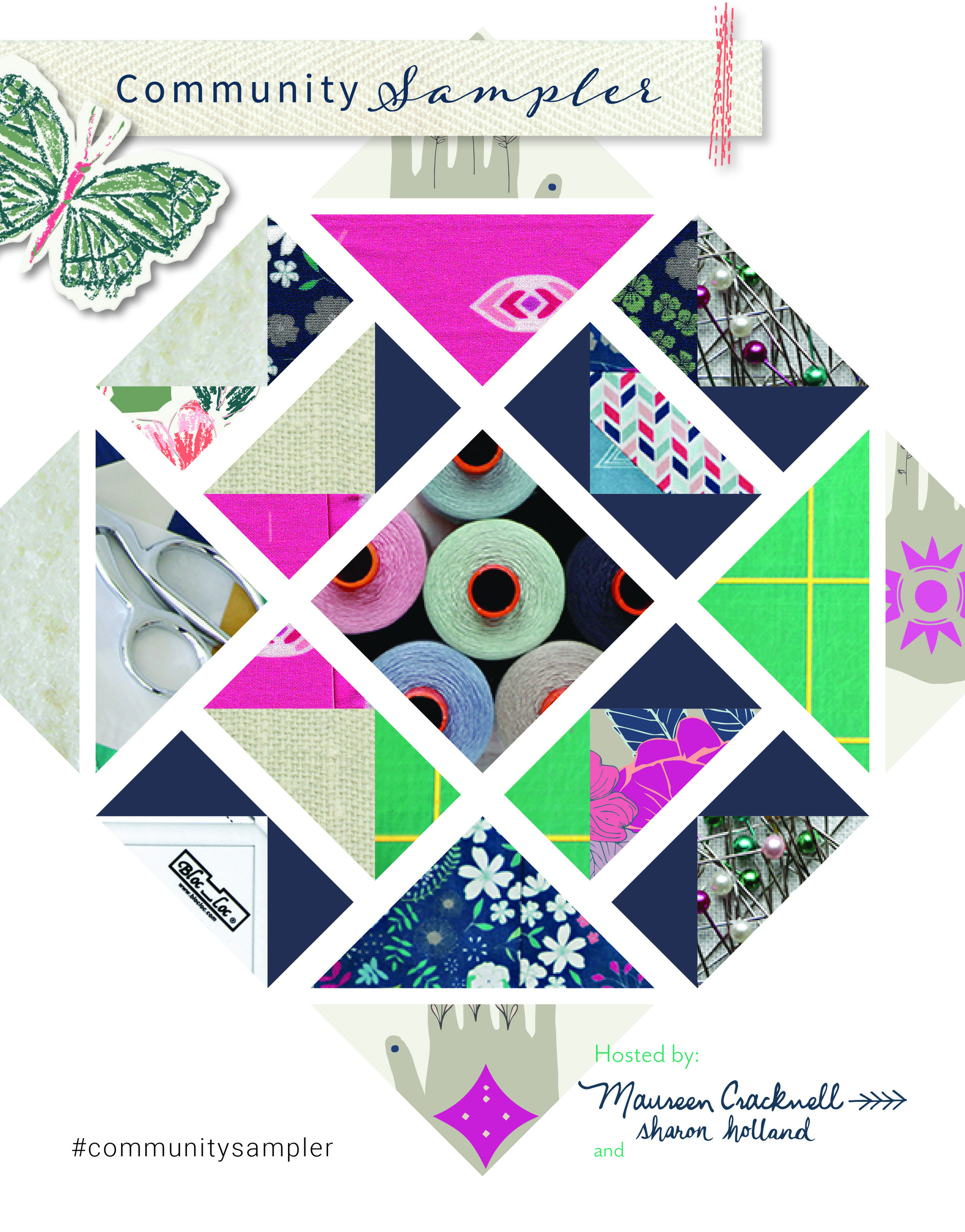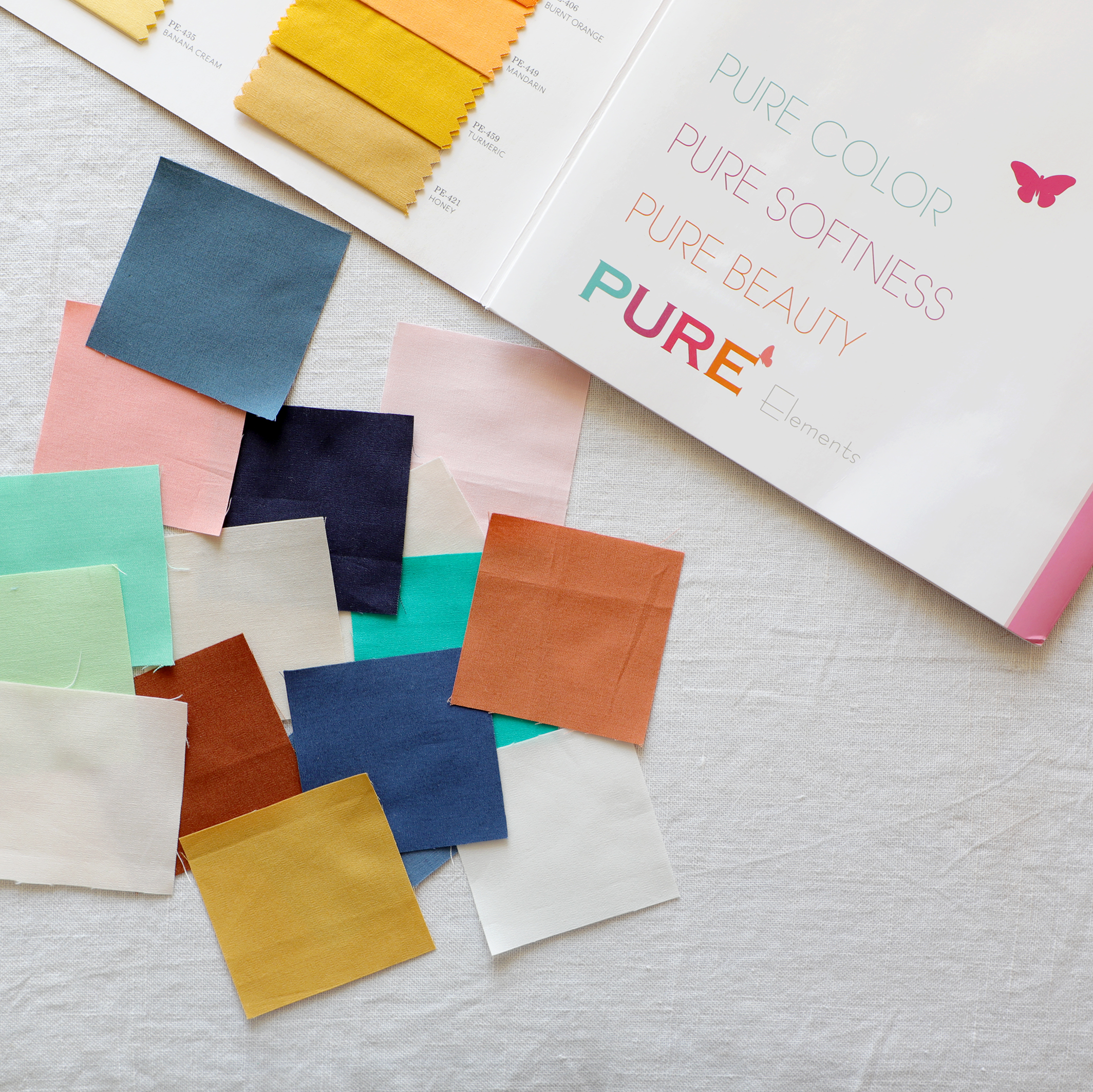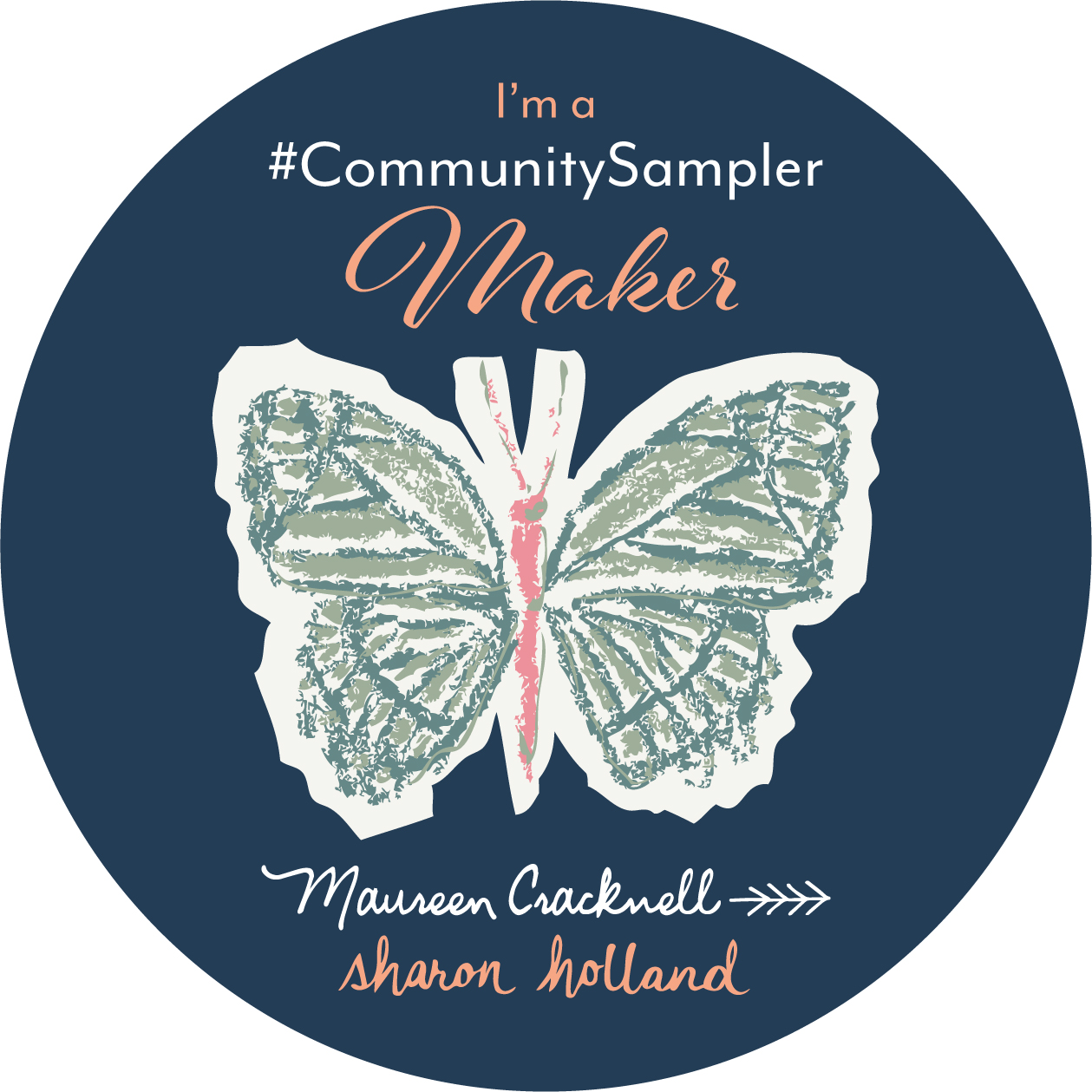Community Sampler Week #1
Today is the official start of the Community Sampler! My dear friend and Art Gallery Fabrics designer sister Maureen Cracknell and I will be co-hosting this 16-week sew along. You may remember the Sewcial Bee Sampler event we hosted last year? You can still access all the PDFs. tips, and tutorial blog posts from last years block-of-the-week sew along. Begin your adventure with the first post, Start of Something Sewcial. Many of the tips and techniques we used in the 2017 sampler will be used again for this years new sampler plus there will be some new skills to add to your growing quilt repertoire.
Your first PDF download will be the Introduction packet. In it you'll get an overview of what to expect over the next 16 weeks (that period includes this week), a full material list, and coloring book pages so you can start planning your quilt. You'll also be getting your first look at the quilt layout. Today's post will focus on how I chose my color palette for my sampler quilt. Hopefully you'll get inspired and it will help you when you gather your supplies for next week's block release.
Download the free Introduction PDF from my Sew Along page. To keep the Instruction download a small file size and your printing to a minimum I have left the pretty cover page off of the Introduction PDF. If you'd like to include and print out our cover, click on the image below and then you can add it to your PDF.
Fabric Selection
Pure Elements by Art Gallery Fabrics
Today's post will talk about how to get started pulling your fabrics for your sampler. With so many beautiful fabric options available it's hard to know where to begin. In the Introduction PDF I suggest you focus on pulling 5 light fabrics, 5 medium fabrics, and 5 dark fabrics to make up your total yardage needed for blocks. You can adjust and sculpt the selection as you begin sewing blocks but it's good to have a basic understanding of what fabric you'll be using from the start. Here's my process for this year's sampler quilt...
This year I gave myself the challenge to work in only solids for my sampler quilt. Now, that may not sound like much of a challenge to some of you but don't forget, I'm a pattern designer and it's my passion to work with prints! I've only made 3 other quilts--EVER--that were all solids. That's 3 out of hundreds so this is a challenge for me. But, disclaimer here, once my new fabric line for Art Gallery Fabrics shows up around April-May of this year, you better believe I'll be making a second quilt! I am anxious to start sewing with my new collection and it will be fun for me to make a print version of this quilt, too.
Sometimes it's hard to know where to begin when choosing fabrics for a quilt. So, to get over that hump of what colors to use, I turned to Pinterest for help. You can follow me there at ShareDesigns where I've started a Community Sampler board. For my solids inspiration, I used the beautiful images found on Pinterest to help me pick a color story. Here's the mood board I put together for color selection.
Collage by Sharon Holland of images pulled from Pinterest
I tried not to over think things but also wanted to be receptive to incorporate new colors I wouldn't normally use. I just chose a palette that spoke to me and gave me enough colors to play with in a quilt without being overwhelming. Really, my color palette in the mood board appears rather limited but instead of selecting a ton of different colors I decided to gain variety and unity by expanding each color further with shades and tints of that color. Luckily, Art Gallery Fabrics has a wide range of gorgeous solids to choose from. I picked the core colors then added in tints and shades to build this 16-color fabric pull. Here's the result: Blush pink, peach, coral, copper, chocolate, kelly green, mint, jade, denim, navy, teal, honey, white, off-white, and cream. All these glorious solids are Art Gallery Fabrics Pure Elements (which feels like percale, btw) and below are the sku numbers of the exact palette I will be using.
Pure Elements solids from Art Gallery Fabrics
Even if you're not using solids but going with prints or a mix of prints and solids it can be overwhelming where to begin. Starting with a fabric collection takes all the guess work out of it for you. The designer has already done the heavy lifting and coordinated the colors, scale of prints, visual textures of busy and blender prints, light and dark fabrics, and put it all together in one beautiful range. Supplement with solids, if necessary, and let the main focus print with the most colors clue you in to what colors to add in. Many fabric collections come in two or more color ways for an emphasis on a warm or cool side of the color wheel. We each have a preference to warm or cool colors and this just helps to narrow down and get to the heart of what speaks to you.
Maureen and I would love to see your fabric pulls and selection process. After reading this blog post, pop over to Maureen's post and see her mood board and fabric pulls for her sampler quilt. If you're on Instagram and use the hashtag #CommunitySampler when posting your sampler photos the entire Community Sampler community can see your work and inspiration. Did you know you can now follow hashtags on Instagram??? Yes, it's a fabulous new tool for not missing a single thing of what you want to connect with on IG. Every time you post to our #CommunitySampler hashtag pool (and have a public account) you're automatically entered into the weekly drawings and every post compounds--furthering your chances to win. This Friday I'll post details about the first giveaway--so start posting away! Don't have anything to post yet? Don't worry. Grab the "I'm a Community Sampler Maker" button below and post that to your IG account. Be sure to use the #CommunitySampler hashtag!
A Word About Copyright
I want to take this time to remind everyone about copyrights and what copyright infringements to avoid. I apologize up front for all the Do's and Don'ts in the following paragraphs. Unfortunately it's a necessary evil to remind everyone to respect the work of others.
All the graphics, illustrations, photography, instructions, tutorials, logos, etc. posted on this blog and in the PDF downloads are copyrighted materials and are for your personal use only. That means they are not to be distributed in any way whatsoever without written permission by (me) Sharon Holland. Kitting and fabric bundles are allowed but direct your patrons to my website to download the PDFs. Classes are not allowed. Do not post the PDFs on your blog or distribute them. Instead, direct your readers to this site to download the PDFs where they will find the added supportive tips and tutorials from my blog posts. This is a free sew along provided by myself and Maureen Cracknell and our only compensation for the time and money we have put into hosting this event comes from readers finding our blogs. Please remember to give proper credit and direct links when blogging about the sew along.
If you display your finished quilt in a show or competition, please credit "Sharon Holland" for the quilt design as well as reference the Community Sampler. Of course, the blocks you make are your creation and feel free to post about those--just mention the source and tag Maureen and I. Again, personal use only and not to be used for profit.
The PDFs and posts for this sew along will remain up on my site long after this event ends and all the copyright rules will apply. Thank you for being considerate and respectful of copyrights.
Community Sampler Sponsors
Don't forget that this Friday's a Giveaway Friday on the Community Sampler sew along. Maureen and I will take turns hosting a giveaway each week where one of our generous sponsors will be featured and offering amazing prizes both here on our blogs and also on Instagram. Maureen will be hosting the giveaway from her blog this Friday and you'll be instructed how to enter at that time. Until Friday, happy fabric sourcing!










